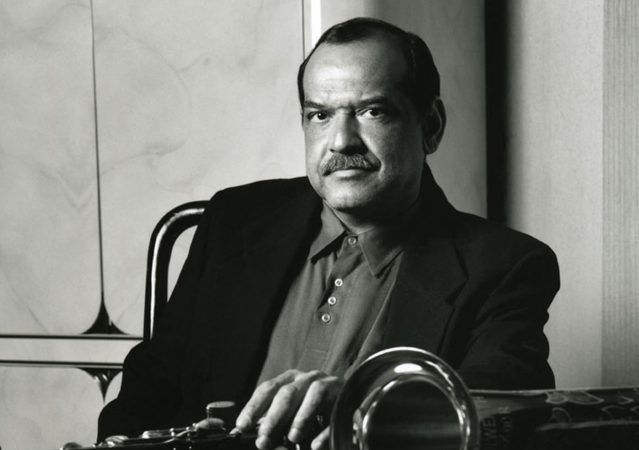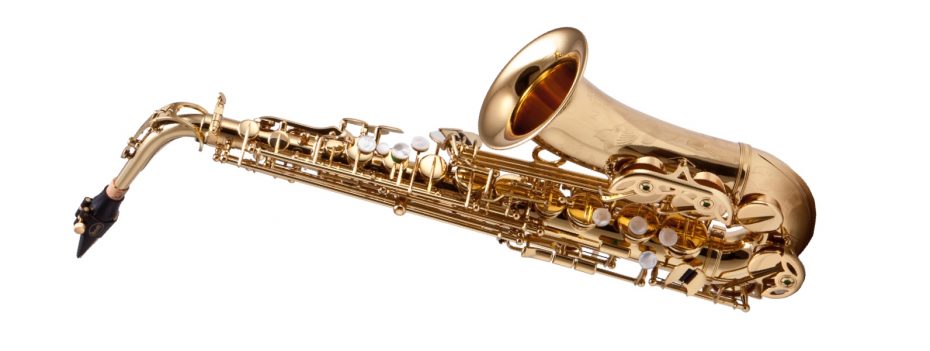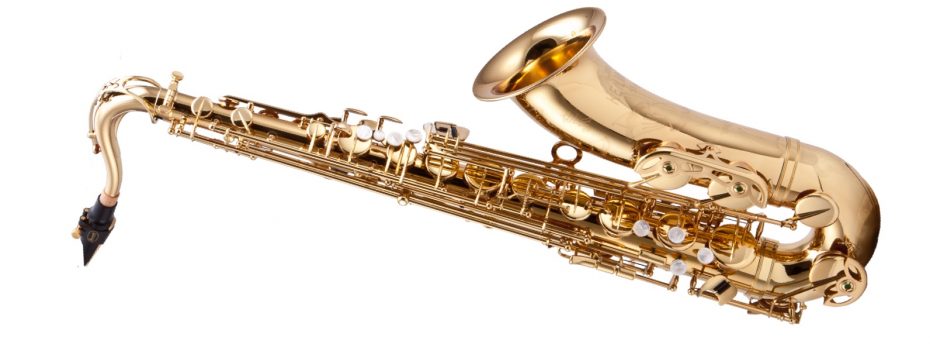Suche
Ernie Watts

“He is one of the greatest living tenor saxophonists, at the top of his game.”Ian Patterson / All About JazzTwo-time Grammy Award winner Ernie Watts is one of the most versatile and prolific saxophone players in music. It has been more than fifty years since he first picked up a saxophone, and from age sixteen on he has been playing professionally, initially while still attending school. Watts has been featured on over 500 recordings by artists ranging from Cannonball Adderley to Frank Zappa, always exhibiting his unforgettable trademark sound.After 15 albums as a leader, for a variety of labels large and small, Watts started Flying Dolphin Records in 2004, in partnership with his wife Patricia. Flying Dolphin (distributed by City Hall Records in the US and Laika Records in Germany) is a new chapter for the artist’s creative expression. “Through my years of studio work, touring, and recording,” he says, “I’ve played in every kind of musical setting. I’ve reached a place in my life where I need to make music on my terms. Starting my own label provided me with a new sense of freedom.”The most recent way this freedom is expressed is through Flying Dolphin’s newest release, Oasis (2011). For Ernie Watts, music has been an oasis his whole life, an oasis both wide and deep. This album contains music from many sources; three compositions from Watts, one each from Christof Saenger and Heinrich Koebberling of the Ernie Watts Quartet, “Shaw Nuff,” a bebop classic from Charlie Parker and Dizzy Gillespie, one ballad from Johnny Mandel and another from Joe Sample. Lennon/McCartney’s “Blackbird” appears, and Ernie’s major inspiration John Coltrane is represented by “Crescent.”Other releases in the Flying Dolphin catalog include Four plus Four (2009), a studio project with both the US and European Ernie Watts Quartets, recorded in Los Angeles and Cologne, Germany, including “Through My Window,” a Watts original written to showcase both quartets together. To The Point (2007) was made live with the Ernie Watts Quartet at The Jazz Bakery in Los Angeles. Analog Man (2006) is winner of the Independent Music Award for Best Jazz Album of 2007, with his European Quartet, touring together since 1999. Spirit Song (2005) was Watts’ first studio recording as a leader since the release of Classic Moods (JVC) in 1999. Watts used a handmade cedar Spirit Flute to introduce the title track, creating the haunting folk melody which is then reprised on tenor. Flying Dolphin’s first release ALIVE (2004) was recorded live at the Backstage in Fulda, Germany. The chance to hear Watts at immediate heat in the midst of his own music had only been available before to his concert audiences. To The Point and ALIVE both vividly capture that live experience, once with each quartet.Watts started playing saxophone at age 13 in Wilmington, Delaware. He went with a friend who was joining the local school music program, and found himself carrying home an instrument too. “I was a self-starter; no one ever had to tell me to practice,” remembers Watts. His discipline combined with natural talent began to shape his life. He won a scholarship to the Wilmington Music School where he studied classical music and technique. Though they had no jazz program, his mother provided the spark by giving him his own record player plus a record club membership, for Christmas. That first record club promotional selection turned out to be the brand-new Miles Davis album Kind of Blue. “When I first heard John Coltrane play, it was like someone put my hand into a light socket,” Watts says. He started to learn jazz by ear, often falling asleep at night listening to a stack of Coltrane records. Although he would enroll briefly at West Chester University in music education, he soon won a Downbeat Scholarship to the Berklee College of Music in Boston, renowned for jazz.When Gene Quill quit Buddy Rich’s Big Band in Boston, trombonist Phil Wilson (a professor at Berklee), was asked to recommend a student as temporary replacement. A young Ernie Watts was referred, and left Berklee for that important spot. The “student temporary” stayed with Rich from 1966-1968 and toured the world, also recording two albums with the band—Big Swing Face and The New One. Ernie says now, “I guess I got the job,” and laughs.Next, Watts moved to Los Angeles and began working in the big bands of Gerald Wilson and Oliver Nelson. With the Nelson band, Watts visited Africa on a U.S. State Department tour in 1969. They played in Chad, Niger, Mali, Senegal, and the Republic of the Congo, which included the opportunity to meet and jam with the local African musicians. Remembering the experience, Watts recalls Africa as “a timeless land.” “It was amazing to play a government-sponsored concert in the evening, then take a walk the next morning and see a camel caravan coming in from the desert, laden with giant salt blocks. That had been happening for thousands of years! Walking out into the desert at night, I felt the tremendous quiet there, something I had never experienced before, or since.” It was also with Oliver Nelson that Watts had the occasion to record with the legendary Thelonious Monk on Monk’s Blues (Columbia).During the 1970s and ‘80s, Watts was immersed in the busy production scene of Los Angeles. His signature sound was heard on countless TV shows and movie scores, almost all the early West Coast Motown sessions, and with pop stars such as Aretha Franklin and Steely Dan. Though the pop music genre placed narrow confines on his performance, the studio sessions allowed Watts the chance to constantly hone and refine his tone. After years in the studios, Watts’ passion for acoustic jazz never left him. At the end of a long day of sessions, he could frequently be heard playing fiery jazz in late-night clubs around Los Angeles.In 1983, the film composer Michel Colombier wrote an orchestral piece entitled “Nightbird” for Watts. At the work’s inaugural performance at the Dorothy Chandler Pavilion in Los Angeles, Charlie Haden came backstage to introduce himself. The meeting led to Watts performing with Haden’s Liberation Music Orchestra and to tours with Pat Metheny’s Special Quartet which included Haden.Watts’ tour with Metheny’s group in the late 1980s found him on a triple bill with Sun Ra and the Miles Davis Band — a turning point. “The serious energy of Pat’s music inspired me to choose work at this level of performance. Every night I also listened to Sun Ra and Miles and rejoiced in the power I was feeling in the music.” Watts’ charter membership in Haden’s critically-acclaimed Quartet West, with whom he has toured and recorded for twenty-five years, his work for the audiophile Japanese label JVC Music and his growing catalog of original music for Flying Dolphin illustrate his commitment to jazz.His four recordings for JVC Music are some of the finest of his extensive career. For these projects, he surrounded himself with several of his favorite players; Jack DeJohnette, Arturo Sandoval, Kenny Barron, Mulgrew Miller, Eddie Gomez, Jimmy Cobb and Marc Whitfield. The music encompassed both jazz classics and new pieces by Watts. Between his stint with JVC and starting his own label Flying Dolphin, Watts recorded Reflections with Los Angeles pianist Ron Feuer, a 2003 saxophone/piano duet project of lush ballads. He also recorded duet CDs Blue Topaz and Pa Chuly with acclaimed German pianist (and member of his European quartet) Christof Saenger for Laika Records.Watts’ eclectic mix of career activities has included work with vocalist Kurt Elling in a tribute to Johnny Hartman and John Coltrane, which won Elling his first Grammy Award, and concerts with the WDR Big Band Cologne in Germany, followed by the National Radio Band of Slovenia, which played two of his compositions arranged for Watts by the celebrated Michael Abene. He has performed in Jazz at the Kennedy Center for Billy Taylor and has appeared in Australia with Billy Cobham and orchestra.A typical year finds him touring Europe with his own European Quartet in spring and fall, in Asia as a featured guest artist with long-time collaborator and friend, pianist Jeremy Monteiro, and performing at summer festivals throughout North America and Europe, often with Charlie Haden’s Quartet West. In 2012 Watts toured with Doc Severinsen’s recently-renewed big band as featured soloist.He gives back to the music by conducting student clinics and master classes, and soon will release his first educational video A Melodic Approach to Improvisation on Quantum Leap Ltd. Watts has also compiled a collection of orchestral arrangements for guest soloist appearances with symphonies, most recently with the National Symphony of Costa Rica. Finally, there is the occasional “hometown gig” with the Ernie Watts Quartet in California, where he is still based.Summing it all up, Watts describes his ongoing journey. “I see music as the common bond having potential to bring all people together in peace and harmony. All things in the physical world have vibration; the music I choose to play is the energy vibration that touches a common bond in people. I believe that music is God singing through me, an energy to be used for good.”ERNIE WATTS PLAYS KEILWERTH SAXOPHONES EXCLUSIVELYAND USES RICO REEDS

